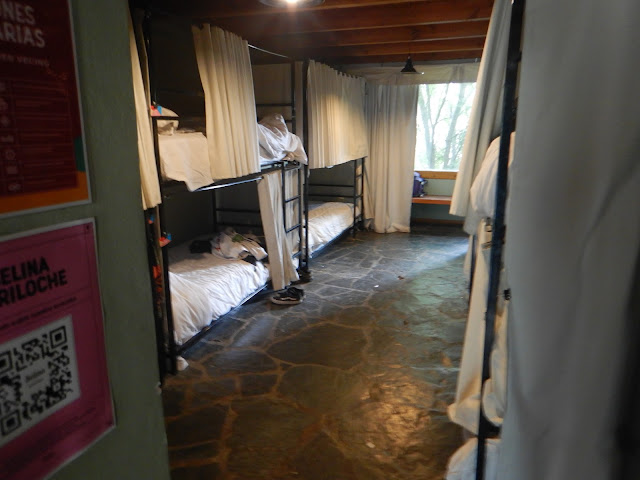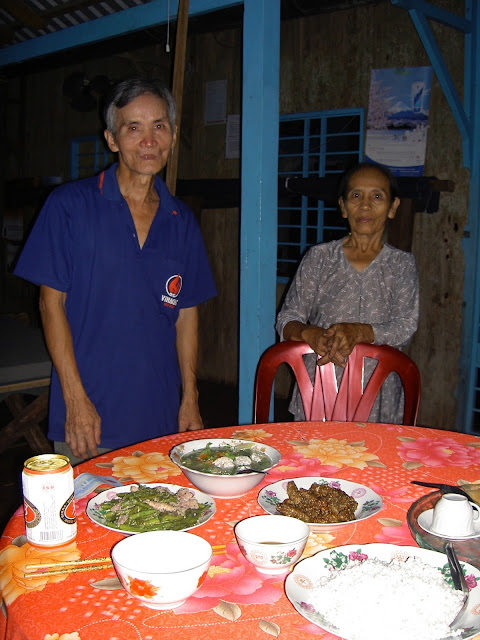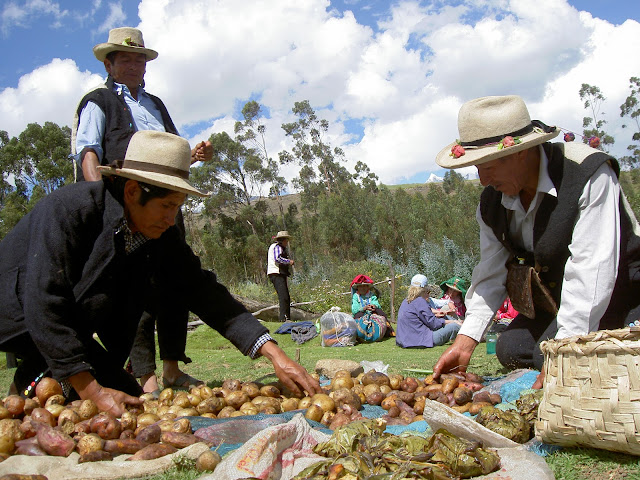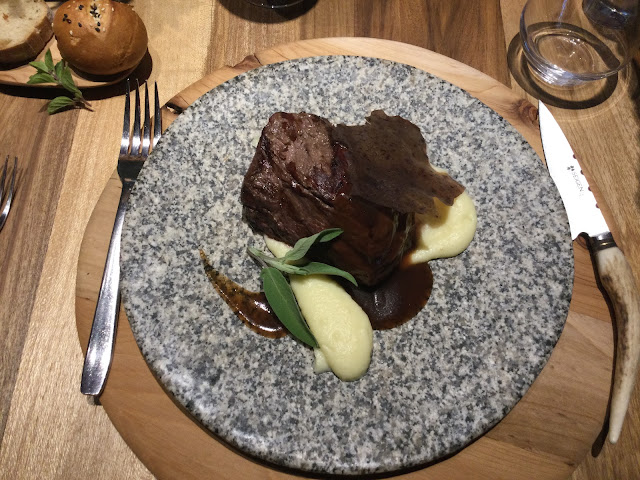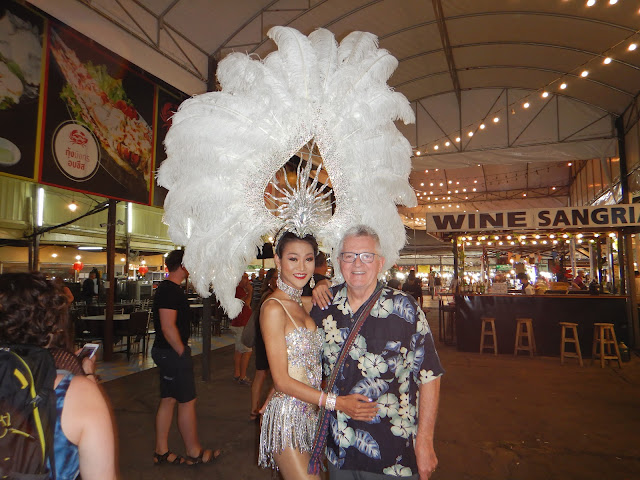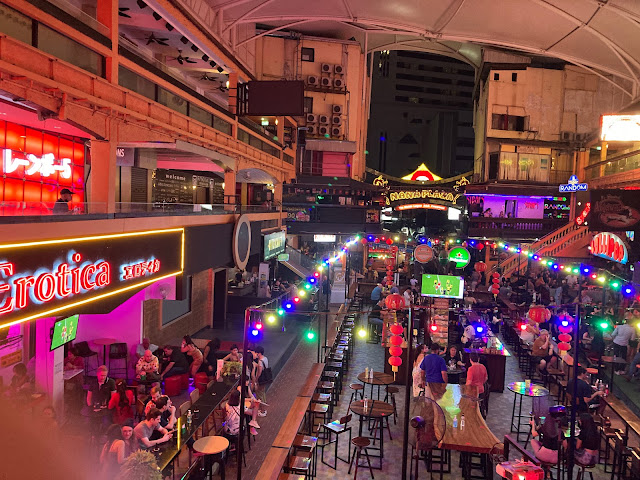How many glossy travel brochures have you looked at and wished that you could go on those adventures, but when you checked the price for the air and vacation package the cost was huge and well beyond your budget?
For example, the University of Washington Alumni Travel—as an alumnus, I get their ads—- offers mostly 2 week guided tours to many of the places I have visited. Here is a comparison of some of their offerings to my travels:
|
Country |
days |
cost |
avg daily cost |
|
India—U of W Alumni Tour |
14 |
$5,174 |
$370 |
|
India—My travel* |
14 |
$1,432 |
$102 |
|
Machu Picchu and Galapagos Island U of W Alumni Tour |
15 |
$9,493 |
$633 |
|
Peru-Machu Picchu and Ecuador-Galapagos Island, and Bolivia—My travel * |
48 |
$4,878 |
$102 |
|
Myanmar—U of W Alumni Tour |
14 |
$4,998 |
$357 |
|
Myanmar—My Travel |
10 |
$803 |
$80 |
|
Patagonia—U of W Alumni Tour |
16 |
$10,582 |
$661 |
|
Chile-Including Patagonia—My Travel |
47 |
$3,784 |
$81 |
|
Vietnam—U of W Alumni Tour |
14 |
$4,497 |
$321 |
|
Vietnam—My Travel |
18 |
$1,117 |
$62 |
* Includes some multi-day tours
If you are a solo traveler like I am, the tour operators add on a single supplement charge ranging from $1,600 to $2,700 which increases the average daily cost to between $418 and $627.
You should also add tips to the cost of tours. Short-day tour tips should be about 10-20% of the cost of the tour, and longer tours should be about $5 per day or more depending on the helpfulness of the guide. Tip at the end of the tour and sometimes there are tip jars especially if there are more guides/drivers/pilots/crew.
With costs this high, your travels will either remain dreams or you will manage to save up enough to take just a few in your lifetime.
If you truly want to travel more, try independent travel. I mostly travel independently for about 40 to 90 days at a time to various places in South America, Asia, and Europe. I save on the cost of travel on these trips by only using frequent flyer points for my travels from my home in Seattle, WA to these international countries.
I have taken 66 international flights using just frequent flyer miles or points. With these international flights, I sometimes am able to do stopovers along the way. My stopovers are either at the beginning of my trips or at the end in such places as Taiwan, Japan, South Korea, Singapore, and Hong Kong. I generally limit my stopover stays to about a week.
I can recall my early fears when I traveled on my own to Delhi, India after clearing immigration and customs, I encountered many security staff carrying AK-47s as I made my way to the taxi drivers as crowds of hawkers vied for my attention. I just looked and nodded to the guy directly in front of me that I would hire him as others tried to pry my backpack from me.
The road to my reserved hotel was dark and crowded with people, cars, bikes, tuk-tuks, and cows. It was a bumpy twisty ride—-nothing like the airport highways typically found in the US. I made it safely to my hotel and felt pretty good about how I made it through the Delhi airport mosh pit to the hotel. Getting about on future travels was a breeze compared to this early introduction to independent travel.
By using frequent flyer points for my travels from home to Europe, Asia, or Latin America, I save from $550 to $10,500 in airfare per trip. My only travel costs using frequent flyer miles are the airport fees and taxes which range from $50 to $121 for each round-trip flight. Using points for travel from Barclays or Capital One credit cards, include these fees and taxes. Plus you get frequent flyer mileage points for the flights.
To get enough frequent flyer miles/points, I combine what is called “churning credit cards” with using credit cards for almost all purchases—even small ones—and recurring bills. Just remember for this to work well, you MUST pay off the balance on ALL of your credit cards.
Churning credit cards is when you open up credit cards that offer frequent flyer miles or points. The best offers now are 50,000 to 100,000 miles from United Air, Chase, Barclays, and Capital One. Some cards offer 2 miles or points for every dollar spent like the Capital One and Barclays cards. Here is a website I use to check out the best credit card frequent flyer or travel points offers: https://www.nomadicmatt.com.
The Nomadic Matt website has lots of information about travel and travel blogging. He offers online training sessions, and travel books, and has recently sponsored in-person meet-ups around the world, including here in Seattle. He had just begun offering tours to several places. I even met him last summer when I was staying at the Cocoon City Hostel in Chania, Crete, Greece as shown below.
I use Google Flights to determine what flights to consider taking based on price, time, number of stops to destination, and preferred air carriers. Here is their website: https://www.google.com/travel/flights
I have gone to a few Nomadic Matt-sponsored meet-ups in Seattle and a few virtual ones during the dark days of the COVID-19 pandemic. It is exhilarating talking with other like-minded travelers who do not get bored with your travel stories and travel tips. One of the latest tips I picked up at one of these meetings was to buy Travelguard insurance for each trip and only claim the airport fees so you can get up to 3 months of travel insurance for under $20 since my air flights are booked using miles/points and I don't make advance hotel reservations for the trip.
Once you get to your destination, the other biggest way to save money while traveling is to stay at cheap hotels and hostels. I make advance reservations if I arrive after dark, and usually, the day before arrival at the next place since my travels are very flexible.
I find that www.hostelworld.com is a very good resource because of the information, photos, location maps, and traveler reviews. Other valuable lodging sites are booking.com and agoda.com.
You get a real sense of what kind of place you might be staying at and the kind of travelers that are staying there by reading travelers’ reviews.
Although I have yet to use it, I understand that https://www.airbnb.com also provides inexpensive and interesting accommodations.
When I stay at hostels, I find that they are generally cleaner than some of the cheap hotels, they have several amenities that many travelers enjoy such as a gathering place with other like-minded travelers from around the world, wifi, a swimming pool, book exchanges, bicycles for free or rental, breakfast included-- sometimes, kitchens—-for those that like to cook or save money—and tour options. Some hostels also have private rooms available.
I find the Lonely Planet country guides are essential for me to navigate around the cities, get from one city to another, locate where to find cheap hotels and identify the highlights of the country or city I am considering visiting.
I cut up the guide book and while navigating the cities, I carry only that portion that is about that city or place. I also navigate using https://maps.me by downloading the appropriate maps and I can use it when I am not connected to the internet via wifi. I also navigate using my iPhone Google Maps app.
Hotels usually have a TV with a few English-speaking channels, A/C, hot showers, in-room wifi, tour options, and breakfast included sometimes. I stay in hotels when there is not much cost difference between hostels and hotels and also when I want to be by myself.
Although I could have saved more money by limiting my meals to just street food or cooking in the hostels, I enjoy spending money at good restaurants trying out the local dishes, or having meals with people I have met along the way.
In comparison to the high costs of the typical guided tour trips described above, here is a summary table of my more recent trip costs broken out by total costs, lodging, food, and tours or travel.
Note that when I am home, my average daily food and dining costs average about $18/day.
Places | Total Cost | Days | Cost/day | Lodging /day | Food/day | Travel/day |
2022 Thailand | $3,945 | 59 | $67 | $32 | $24 | $11 |
2021 Loreto, MX by car | $4,246 | 35 | $121 | $54 | $47 | $20 |
2021 National Parks | $1,741 | 9 | $193 | $84 | $64 | $45 |
2021 Croatia and Greece | $5,908 | 53 | $111 | $21 | $64 | $31 |
2020 Turkey | $1,764 | 23 | $77 | $19 | $32 | $20 |
2020 Thailand, Laos, Vietnam | $2,112 | 62 | $34 | $17 | $29 | $26 |
2019 Spain | $1,047 | 13 | $81 | $21 | $36 | $23 |
2019 Morocco includes an Intrepid Tour cost of $1,285 for 14 days | $2,322 | 23 | $101 | $10 | $21 | $85 |
2019 Dubai | $258 | 4 | $65 | $16 | $21 | $28 |
2018 Thailand | $2,120 | 28 | $104 | $22 | $35 | $11 |
2018 Cuba—Crooked Trail Tour included at a cost of $2,691 | $2,903 | 11 | $264 | Incl. | $19 | $245 |
2018 Loreto, Mexico Sold home | $995 | 34 | $29 | $6 | $20 | $3 |
2017 Loreto, Mexico (2 trips) includes a $4,000 Copper Canyon Tour and driving to MX from SEA. | $11,438 | 107 | $107 | $47 | $20 | $40 |
2016 Loreto, Mexico | $1,470 | 36 | $41 | $19 | $33 | $1 |
2016 Appalachian Trail | $957 | 22 | $44 | $17 | $19 | $7 |
2016 Hong Kong, Thailand, Cambodia | $3,230 | 62 | $52 | $20 | $23 | $9 |
2015 Colombia, Ecuador, Peru | $6,000 | 60 | $100 | $10 | $22 | $68 |
2015 Philippines, Thailand | $4,218 | 61 | $68 | $20 | $41 | $7 |
2014 Trans-Siberian Train-Russia, Mongolia, China, Vietnam, Thailand, Taiwan | $5,298 | 67 | $79 | $18 | $33 | $28 |
2013 Thailand, Laos, Vietnam | $2,949 | 47 | $63 | $21 | $23 | $19 |
2012 Brazil, Argentina | $3,894 | 45 | $87 | $17 | $29 | $41 |
2011 Japan, Thailand | $4,701 | 61 | $77 | $24 | $30 | $23 |
2011 Chile | $3,784 | 47 | $81 | $21 | $30 | $29 |
Average Cost per day for these trips | $34,074 | 450 | $76 | $24 | $31 | $36 |
.
You can search my blog where I began to describe my travels starting with my 2012 trip to Brazil. In late 2016, I added all of the previous international trips I had taken prior to 2012. You can use the Search This Blog box to enter a country you are looking for or go to the bottom of the Blog Archives portion and pop open the various dates to see different country blog entries
On those trips where the Travel/day costs are higher than the others, I took guided tours that ranged in cost from $20—one-day island/snorkel trips—- to $3,300 —longer guided tours to Lima, Cusco, and trek to Choquequirao, Peru, Ladakh, India, Morocco or Cuba.
Loy Kratong Festival in Phuket
Vegetarian Festival in Phuket
Perito Moreno Glacier, Argentina
The average daily cost of my trips was $76 compared to the average of the UW Alumni Tours which ranged in daily cost from $304/day to $627/day—-400% to 825% higher daily cost than my trips.
When you travel with an organized group, these travelers tend to socialize together in a tour guide's protective bubble and are exposed to the local people and cultures in an orchestrated manner. I am sure the guides provide an extensive narrative about the people, history, environment, fauna, and flora that is much more exhaustive than what I get traveling solo.
When I travel solo, I interact with the local people to get all of my needs taken care of including shelter and food as well as interesting attractions and events. I always take the local transportation and avoid taking taxis unless I need to get to or from the airport after public transportation is shut down either in late evenings or early mornings. I take some of the local tour offerings advertised in the hotels or hostels I am staying at.
In my blog entries at http://rtjhunt.blogspot.com, I describe some of the more interesting experiences I have had while traveling this way. Most of my travels in the countries are by moto-taxi, jeepney, metro, SkyTrain, bus, ferry boat, and walking. I rarely use airlines once I arrive, but AirAsia and other local airlines are cheaper than traveling by boat or bus to some locations like Ho Chi Minh City, Vietnam to Bangkok, Thailand—just $45.
Once you try my approach to traveling, you will really enjoy meeting the challenges of finding your way in new, different, and exotic places.
Whether you try my approach to travel or go with organized groups, here are five final suggestions to make your travel better—-Money, Potable Water, Luggage, Travel Insurance, and Communications.
Money
No more travelers check and no more big money belt with a large stash of USD now that ATMs are so popular in all of the countries I visited. The Lonely Planet guidebooks show you where to find some ATMs in the cities they feature—there are many, many more. Be sure to use the ATMs at the airport before you leave. They offer a good exchange rate compared to money exchange companies at airports or at your home.
Occasionally you will find that your ATM card does not work at a certain bank ATM machine or at another ATM machine whose ATM bank machine previously worked. In that case, just keep trying other ATM machines. Be sure to retrieve your ATM card for I have found a few left behind and have left one of mine.
Based on recommendations from other travelers, I now use the Schwab ATM/debit card that withdraws money from my Schwab Checking account. Its best feature is that all foreign exchange and ATM fees are reimbursed monthly. For example, my first trip with the Schwab ATM card was to Thailand for two months, and Schwab reimbursed me $73.92 in ATM fee charges incurred in Thailand. I understand there are other banks and brokerages that offer this kind of reimbursement. Since the fee is about the same whether you take a small or large amount of money, I usually get a larger amount around $250 to $300 USD in the local currency. Many places have a limit of about $100 to $175 that you can withdraw at any one time though.
I begin my trips with about $300 USD—a $100 bill, nine $20s, and about 10 one-dollar ($1) bills just in case I cannot locate an ATM machine. US Dollars seem to be welcomed everywhere. Be sure with the USD you take with you is fairly new with no ink marks, tears, or serious folds since the exchange booth folks may reject exchanging them.
To make quick checks on the exchange rates in various countries, I use the iPhone app called OANDA Currency Converter where you can put in the amounts of either foreign currency or USD and it gives you the two values. It does not show you the Argentina Peso blue rate value though--only the official rate which is about 50% less.
WARNING: DO NOT LOSE YOUR ATM CARD OR LEAVE IT IN THE MACHINE.
At many of the hotels, restaurants, and tour offices, credit cards are accepted but may charge you a fee of 2-3%. When using a credit card internationally, be sure that the card you use does not have a foreign exchange fee—-you do not want to end up paying 6% for using your credit card.
Also, when you use your credit card at restaurants, be sure to check the bill to see whether there is a service charge from 10% to 15%. Remember, in Japan, generally, no tips are done. One time, I left a tip in Japan and the waitress chased me down the street to return the tip I had left. The Lonely Planet guide has advice on usual tipping practices.
Generally, merchants, restaurants, transportation companies, and lodging let you use credit cards without any extra fees in countries in Europe. Frequently in Asia countries, there are extra fees of 2-3% if you use your credit card. As a result, ATM usage is greater in Asia.
Since I travel for extended periods, I have auto-pay for my pension. My mortgages, and HOA fees, are on auto-pay from my checking account. My electric, garbage, and water bills, internet, and cable TV bills are all on auto-pay from one of my credit card accounts.
To pay my credit card bills and other bills or online purchases, I use my mini iPad WiFi feature to log in and set up payments for my credit cards or from my checking account. I use my credit cards to make online purchases of goods, services, and charity donations. If you do this, be sure to remember your challenge questions since your computer is at an unknown location.
I travel with 2 different credit cards and 2 different ATM cards and carry one set in a money pouch hung on the inside of my pants and hung by a fabric loop to my belt and the other in my wallet. This way, if you get robbed or lose your wallet, you will have backups for these cards which is much better than stopping your travels to wait for replacements or returning home.
Potable Water
Many travelers and locals buy and use plastic water bottles. I don’t like to see such a waste of resources with the bottles just going into landfills or being recycled. I continue to use a SteriPen—its ultraviolet rays purify the water—-along with a wide-mouth plastic bottle. The recharger cable for the SteriPen has a mini-USB connection. The purification process is quick—-about 1 1/2 minutes of UV light and no chemicals. I have had no intestinal problems during my trips, but some of the Bangkok tap water smelled like sewage. Many hotels and hostels offer filtered water for your refillable bottles.
My Luggage
My total pack weight is about 7 lb. if I am going to a warm climate, and 9 lbs in a colder climate. My 4 shirts, pair of pants, and 2 pairs of underwear and socks worked well with the frequent washings. My rain jacket was useful for the occasional heavy rains.
You can go to my April 11, 2012 blog entry—http://rtjhunt.blogspot.mx/2012/04/what-i-am-packing-what-it-weighs.html---for a detailed list of what I carry and what I wear for colder climates.
Travel Insurance
I used to buy annual travelers insurance from Travelguard, but in the last two years, they do not offer it to residents of WA state, because the documentation that WA state has asked for has not been completed. As a result, I am only able to purchase individual trip insurance. This limitation became a great savings opportunity as I first learned during one of the virtual meet-ups with Nomadic Matt’s group. Since I do not pay for air tickets when using frequent flyer points, do not usually book multi-day tours or cruises, nor make hotel reservations in advance, I report that my “out-of-pocket” cost ahead of time is just the airport fees. As a result, the travel insurance cost was just $16.20 for my recent 2-month trip to Thailand in 2022. That also included a letter that verified that this insurance policy included a $50,000 insurance coverage for COVID-19 for hotel or hospital coverage.
You must have travel insurance any time you travel! Avoid signing up for the travel insurance offered by the airline companies as a part of your ticket purchase because you will end up paying more and getting less coverage, especially if you take multiple trips each year that are more than 100 miles from your home.
Whether I buy annual travel insurance from Travelguard which costs about $270 per year or individual trip insurance as described above with my 2022 Thailand travel. The coverages and benefits include:
• accident and sickness medical expenses of $10,000
• baggage and personal effects of $1,000
• baggage delay of $150
• emergency evacuation of $100,000
• travel medical assistance included
• trip cancellation of $1,500
• trip interruption of $1,500
• 24/7 travel assistance included
Check out my April 3, 2012, entry to see some of the successful claims I have had. The critical documents you need for successful claims are original receipts on the items that were lost or stolen, and police reports which are sometimes hard to get from the police, but be friendly, patient, and persistent.
When you use your credit card for travel purchases, there are a number of benefits you may qualify for including collision coverage for car rentals, trip delays and/or cancellation, up to accidental death benefits, etc.
Communications
Gone are the days of using international phone cards and internet cafes with the advent of smartphones and wifi almost everywhere. Before COVID-19, I made a point not to take a cell phone with me when traveling. I would use just the internet, with wifi widely available in hotels, hostels, restaurants, bars, and increasingly public places. I would connect using my mini iPad with a Bluetooth keyboard. When I needed to call someone, I would use Skype or Facetime with others who also have an iPhone.
But when I traveled to Turkey in the fall of 2020 while COVID-19 was still raging, most transportation services required you to use your smartphone to get and receive texts to board the buses and trains, and for COVID-19 tracking. I did not have one and relied on the kindness of others in line who allowed me to "borrow" their cell phones.
In my following travels to Croatia, Greece, and Thailand, I took my iPhone and found it very useful for using Google Maps, taking quick pictures and videos, checking money exchange rates, and sending and receiving text messages. Each of these countries had you download their COVID-19 tracking app.
With my iPhone and T-Mobile service, there was no extra cost for data or texts nor the use of Facetime. T-Mobile charges 25 cents per minute for international calls which I did not use except when I accidentally butt-dialed a few folks.
Some people--big talkers--swap out their sim cards and buy a local sim card on their unlocked smartphones if they want to get and receive phone calls from friends and locals.
This is just a brief description of how I go about my solo travels to exotic and interesting parts of the world. In many of my entries, I have described the total costs along with food, lodging, and travel/tour costs.
I have recently uploaded 40 of my travel videos to YouTube now that they allow longer uploads. I also have loaded shorter travel video clips. That link is https://www.youtube.com/c/huntforgold
If you do go there, please subscribe to my video channel since it will help me eventually get some income there and help with my future travels. Fewer people are using DVDs so I am transitioning to streaming my travels on my YouTube channel.














